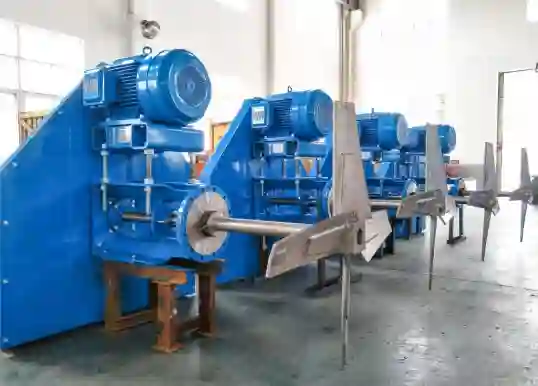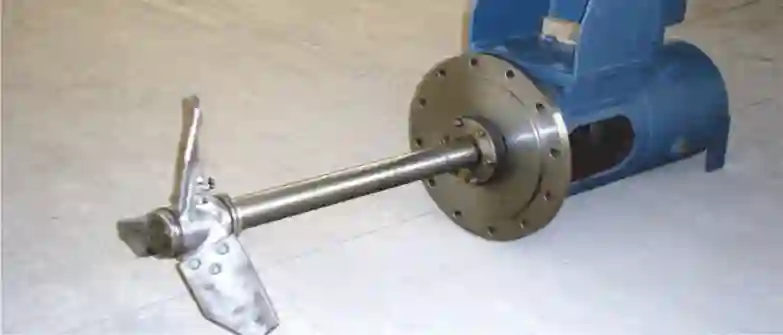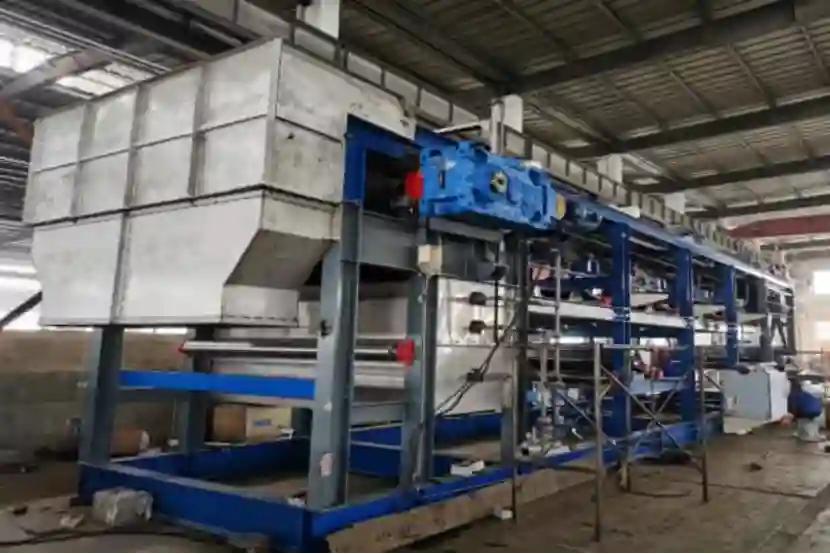Drilling operations in current times heavily depend on drilling fluids that perform consistently to achieve operational success and extend equipment life. The mud agitator stands as a fundamental element which guarantees the operational success of drilling fluids. The mechanical device functions as a crucial element to preserve drilling mud properties which directly affects drilling success rates and operational safety and cost-effectiveness.

Overview of Mud Agitators in Drilling Systems
Mud agitators play a crucial role in oil and gas drilling operations because they maintain drilling fluids in a mixed state while preventing solid particles from settling.
Definition and Basic Components of a Mud Agitator
A mud agitator functions as a mechanical system which operates in mud tanks to achieve uniform solid distribution in drilling fluids. The device contains an electric motor and gearbox and shaft and impeller as its main components. The motor generates power which moves through the gearbox to turn the impeller. The tank experiences turbulent flow because of the rotating motion which prevents heavy solids from sinking to the bottom.
Where Mud Agitators Are Used in Drilling Operations
Mud agitators function as the main equipment which operates within surface mud systems that exist on drilling rigs. The surface mud system consists of four main tanks which include suction tanks and mixing tanks and reserve tanks and settling tanks. The equipment maintains uniform fluid properties in each tank section which enables proper downhole operations.
Functions and Importance of Mud Agitators
A mud agitator performs functions that go beyond basic mixing because it plays a crucial role in sustaining operational stability during drilling operations.
Preventing Sedimentation in the Mud Tank
The main purpose of this function is to stop sedimentation by distributing solid particles evenly throughout the fluid. The absence of proper agitation causes heavy cuttings to sink to the bottom which results in tank blockages and decreased storage capacity.
Maintaining Uniformity of Drilling Fluids
The properties of drilling fluids need to be uniform for wellbore stability and efficient cuttings transport. The purpose of mud agitators is to maintain uniform mixing which keeps additives spread out across all tank compartments.
Enhancing the Efficiency of Solids Control Equipment
The effectiveness of agitation allows solids to stay suspended in the fluid which enables shale shakers and centrifuges to function better for downstream solids control. The equipment achieves improved separation results while extending its operational life.
Key Types of Mud Agitators
The design of mud agitators follows particular tank shapes and operational needs.
Horizontal Shaft Mud Agitators
These types of mixers are used because they are easy to operate and have a strong design. The horizontal shaft runs through the tank while impellers are attached to it at different points along its length. These mixers work best for rectangular tanks and large tanks that require side-to-side mixing operations.
Vertical Shaft Mud Agitators
Vertical shaft models find their typical application on top of smaller cylindrical tanks. The design allows for simple maintenance access but needs baffles inside the tank to stop vortex formation when operating at high speeds.
Technical Components and Working Principle
The operation of a mud agitator requires analysis of its fundamental parts which function together to perform its tasks.
Motor and Gearbox Assembly
The motor generates rotational power through the gearbox which decreases speed while boosting torque output for effective handling of viscous fluids containing suspended solids. New Hongda offers different types of agitators which form their product portfolio. The company will design and recommend the most efficient and dependable agitators which need minimal maintenance and operate at reduced costs.
Impeller Design and Placement
The impellers generate flow patterns which exist inside the tank. The dimensions and configuration of impellers together with their orientation and placement establish the efficiency of solid suspension. The agitator blade operates at its best speed critical area position to deliver superior performance than PBT.
Torque and Power Considerations
The selection of proper torque ratings enables the agitator to manage heavy loads without experiencing stalling or overheating issues. The equipment operates within a power range of 1.5~1000kW which makes it appropriate for different industrial applications that include heavy-duty mud systems.

Factors to Consider When Selecting a Mud Agitator
The selection of a suitable mud agitator requires assessment of various operational criteria.
Tank Size and Shape Compatibility
The choice of agitator type depends on tank shape because horizontal shafts work best with rectangular tanks but vertical shafts perform better in cylindrical tanks. The selection of agitator type for tank mixing operations must match tank geometry because horizontal shafts work best with rectangular tanks yet vertical shafts provide better performance in cylindrical tanks.
Type of Drilling Fluid Used
The viscosity of oil-based and water-based fluids differs so they need distinct levels of agitation. The density of fluids determines their required torque level because heavy fluids need more torque than light fluids do.
Required Mixing Intensity and Operational Conditions
The mixing intensity levels depend on the predicted solid content levels and temperature swings and chemical reaction rates and other factors. New Hongda engineers created twelve new materials which provide optimal protection against corrosion and wear under different temperature conditions.
Common Challenges and Maintenance Tips
The system needs early issue detection and regular maintenance to function correctly.
Identifying Signs of Ineffective Mixing
The presence of sediment at tank bottoms together with irregular fluid characteristics shows that the agitation system operates poorly because of damaged impellers and improper RPM operation.
Routine Inspection and Lubrication Practices
The inspection process should include checking gearbox oil levels and motor alignment and shaft integrity and impeller wear-and-tear and bearing lubrication following manufacturer specifications.
Troubleshooting Mechanical Failures
The system requires immediate shutdown when mechanical failures happen such as shaft misalignment or gear damage to prevent additional damage through root cause analysis. Simulation tools including Fluent and Gambit and Mixism enable designers to optimize their modifications through real-time field condition feedback.
Benefits of Using Efficient Mud Agitation Systems
High-performance mud agitators provide organizations with multiple long-term operational benefits.
Improved Fluid Circulation and Reduced Downtime
The continuous circulation system stops gelation and sedimentation from occurring which allows pumps to run without interruption and minimizes non-productive time (NPT).
Extended Life Span of Downstream Equipment
Mud agitators prevent premature equipment damage by maintaining uniform suspension of abrasive particles which prevents them from settling into critical areas such as pumps and valves.
Cost Savings Through Optimized Performance
The combination of efficient energy consumption with decreased maintenance requirements leads to reduced operational expenses throughout the product’s lifespan. The system requires 40-50% less power than a standard 450 PBT agitator to achieve equivalent performance.
NHD: A Trusted Supplier for Industrial Equipment Solutions
New Hongda (NHD) has established itself as the leading Chinese agitation technology provider through its extensive delivery of dependable industrial equipment solutions to petrochemicals mining and metallurgy sectors during multiple decades.
The agitators from New Hongda serve multiple industrial applications including mineral processing and metallurgy and petrochemical and fine chemical and sewage treatment operations.
NHD’s product portfolio includes:
- Série de filtros
- Automatic Press Filter Series
- Agitator & Thickener Series
- Equipment for Sulfuric Acid Industry
- Pressure Vessel Series
- Desulfurization Equipment Series
- Filter Cloth Series
- Material Series

The design optimization process at New Hongda depends on Fluent flow simulation software which enables them to test various design options. The company dedicates itself to innovation through which they create products that fulfill industrial requirements and also provide customized solutions for individual customer needs.
Summary and Key Takeaways on the Role of Mud Agitators in Drilling Operations
Mud agitators function as essential equipment which protects drilling fluid stability through sediment prevention and uniform distribution and improved solids control performance and reduced operational risks and decreased downtime. New Hongda delivers complete solutions for industry needs through their expertise in tank geometry design selection and advanced simulation technology for maximum performance.
FAQs:
Q1: What is the main function of a mud agitator in drilling operations?
A: The main function of a mud agitator is to maintain solid particles in suspension through continuous tank mixing, preventing sedimentation that could harm equipment and block fluid flow.
Q2: What is the recommended maintenance schedule for mud agitators?
A: Regular maintenance checks should be performed monthly or per manufacturer instructions to verify gearbox condition, lubrication points, impeller status, and alignment precision for continuous operation.
Q3: Does a single mud agitator design work for every drilling operation?
A: No, mud agitator choice depends on tank dimensions, fluid composition (oil-based or water-based muds), power requirements, and environmental factors like temperature and chemical exposure, requiring specialized materials and designs.

